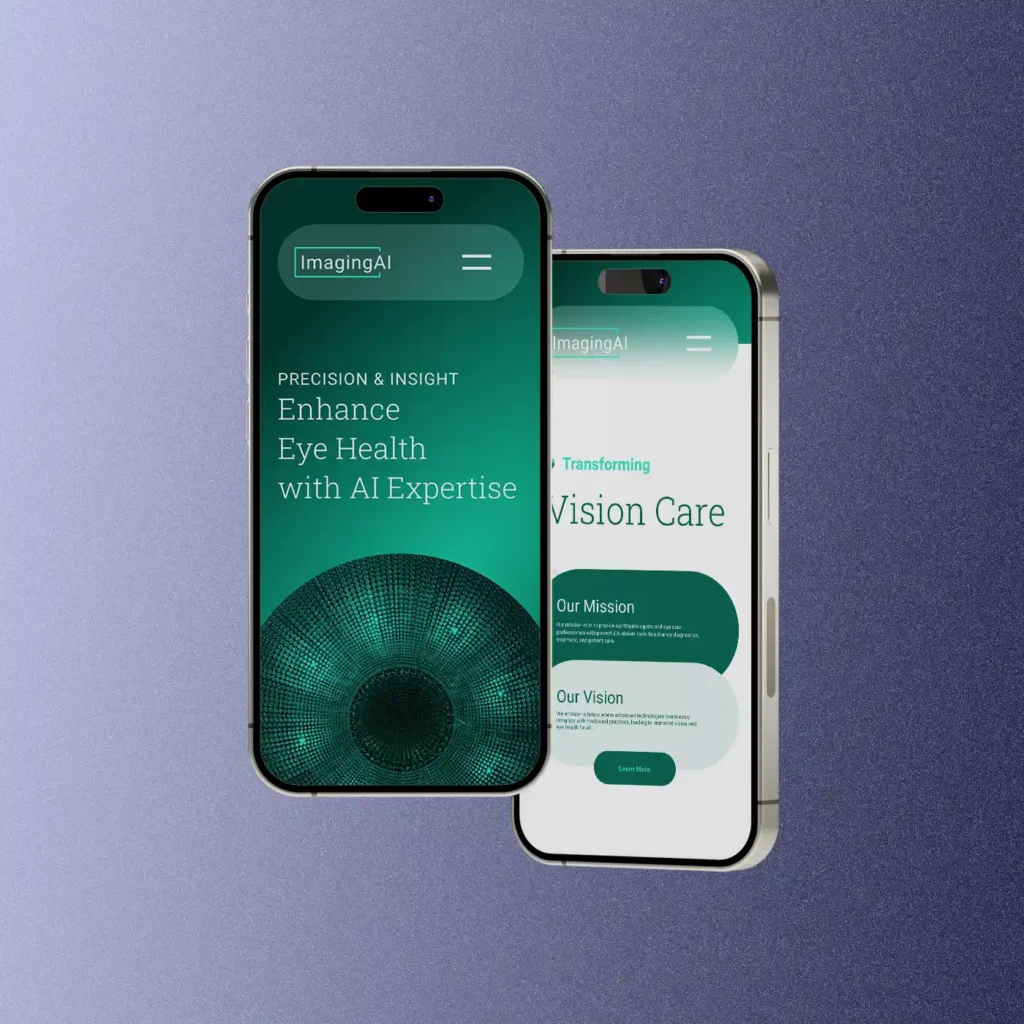Design Systems and AI Technology

As artificial intelligence (AI) becomes increasingly integrated into our daily lives, a brand-focused design language is important. A well-crafted design language enhances user interaction and ensures that AI technologies are accessible, understandable, and beneficial to a wide audience. Particularly, it is also essential for brand’s design languages to align with their established or growing ecosystem for recognizability.
A design language attains the visual and interactive elements of an interface. Within AI systems, a design system is the front-end visuals that harbor the AI technology that is functioning on the backend. This includes everything from graphical interfaces and sensory feedback to the underlying principles that guide user interaction. A strong design language helps users navigate complex AI functionalities with ease and confidence.
Consistency in Your Visual Story
Like a UI/UX design, consistency is one of the many pivotal ways brands grow their visual stories. The consistent use of colors, typography, and layout across AI interfaces plays a crucial role in enhancing user experience by ensuring a seamless, intuitive, and reliable environment. Consistent colors enhance brand recognition by creating visual coherence and simultaneously evoke a specific tonality, making the interface feel more inviting and easier to navigate. Typography contributes by ensuring text is easy to read and appears uniform across various sections of the interface, reducing the cognitive strain on users and making information processing smoother.
Moreover, a uniform layout helps in building a predictable structure that users can quickly familiarize themselves with, which is especially important in complex AI-driven applications. This familiarity allows users to interact with the interface more efficiently, increasing overall user satisfaction and engagement. By maintaining these design elements consistently, designers can create a user experience that feels more integrated and less fragmented, which is essential for building trust and retaining users over time.
Intuitive Design with Interactivity
Interactivity in AI systems is enhanced significantly when the system provides responsive feedback to user actions, making the interactions not only feel immediate but also meaningful and engaging. This feedback can be established in several forms, such as animations that visually represent the action’s effect, auditory cues like sounds that confirm a selection or alert the user to changes, or even tactile responses such as vibrations in handheld devices. This type of feedback helps bridge the gap between user input and system output, giving users clear signals that their actions have been recognized and are being processed. Such responsiveness improves usability by making the interface more intuitive and enriches the user experience by adding a layer of satisfaction to routine interactions.

Incorporating responsive feedback effectively can significantly enhance user trust and confidence in an AI system. For instance, subtle animations can guide users through a process, highlighting changes or the progress of their actions, which helps in reducing confusion and frustration. Sounds and tactile feedback can reinforce user actions, providing an immediate sense of engagement and making the interaction feel more tangible. This is particularly important in complex or critical applications where user decisions rely heavily on the feedback provided by the system. By thoughtfully integrating these elements, designers can create more dynamic and responsive AI interfaces can meet user expectations for deeper connections with the technology.
Accessible Design
Accessibility in design is a fundamental aspect that ensures AI tools are usable by people with a range of abilities, including those with disabilities. Prioritizing accessibility involves designing interfaces that cater to a wide array of sensory, cognitive, and motor abilities. This might mean incorporating features such as screen readers, text enlargers, voice recognition, and alternative input methods to accommodate users who might have difficulties using conventional input devices. Designing with accessibility in mind not only broadens the user base but also adheres to legal and ethical standards, ensuring that technology serves a diverse population. Additionally, accessible design often improves usability for all users by creating simpler and more flexible interactions.
The development of a clear and effective design language is crucial for the future of AI. By focusing on consistency, accessibility, and ethical design, designers can ensure that AI technologies are efficient but also intuitive and inclusive, paving the way for a more integrated interactions.
Best Practices to Consider Post-Brand Design Refresh
A brand refresh is a pivotal moment for any company, representing an evolution in its mission, vision, or values. While the creative and strategic elements of the refresh are crucial, the steps taken after the reveal can significantly impact its…
Maximizing Brand Impact with Lead Generation
Now more than ever, brand authenticity has become a core factor in audience engagement and interactions. Branding is all about building relationships with potential customers which in turn can help ignite conversions. Lead generation plays a…
Elevating Web Design from Average to Exceptional
In the digital age, a website serves as the cornerstone of a brand's online presence, often acting as the first point of contact with potential customers. While an average web design might fulfill basic needs, transforming it into a highly…



